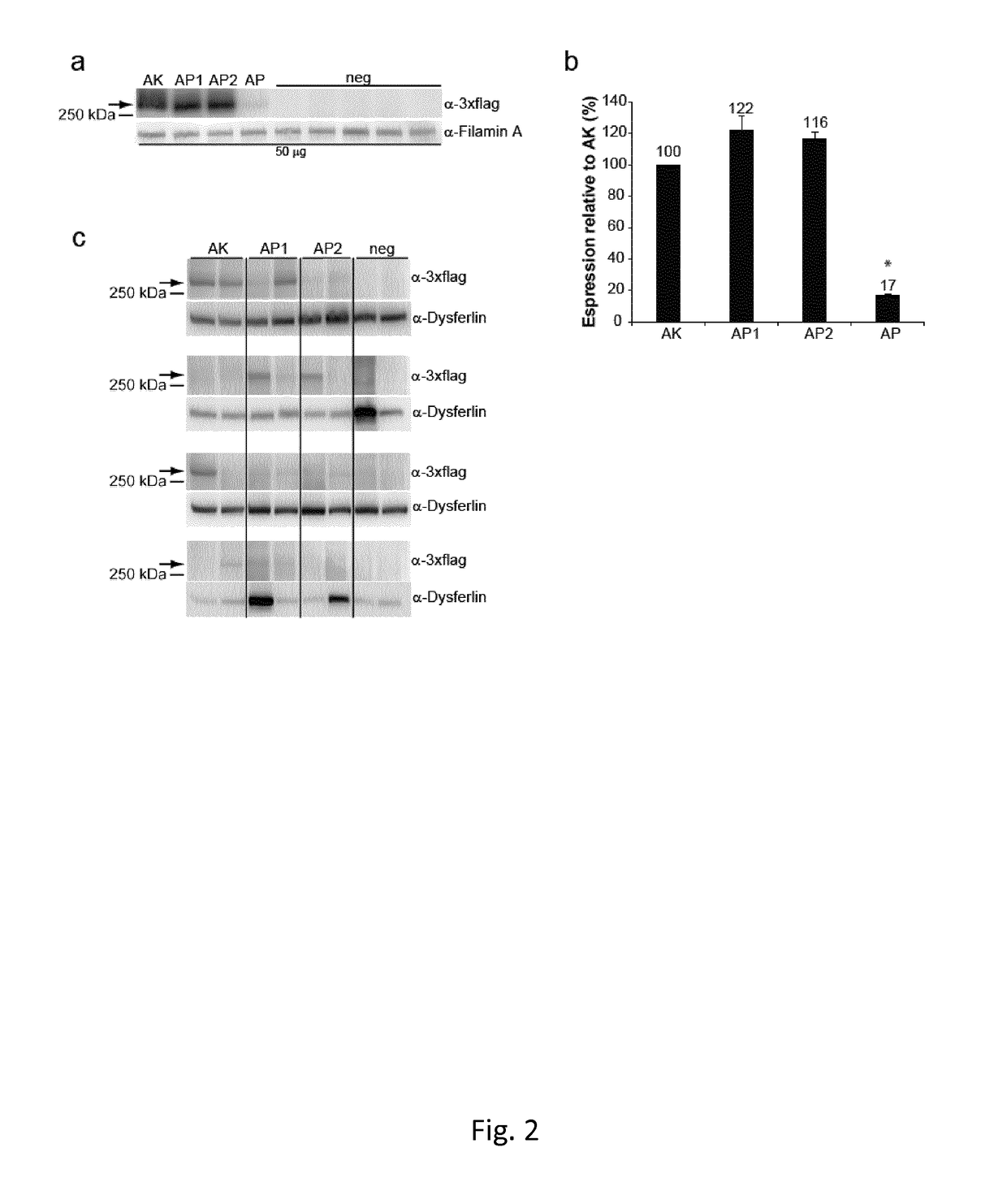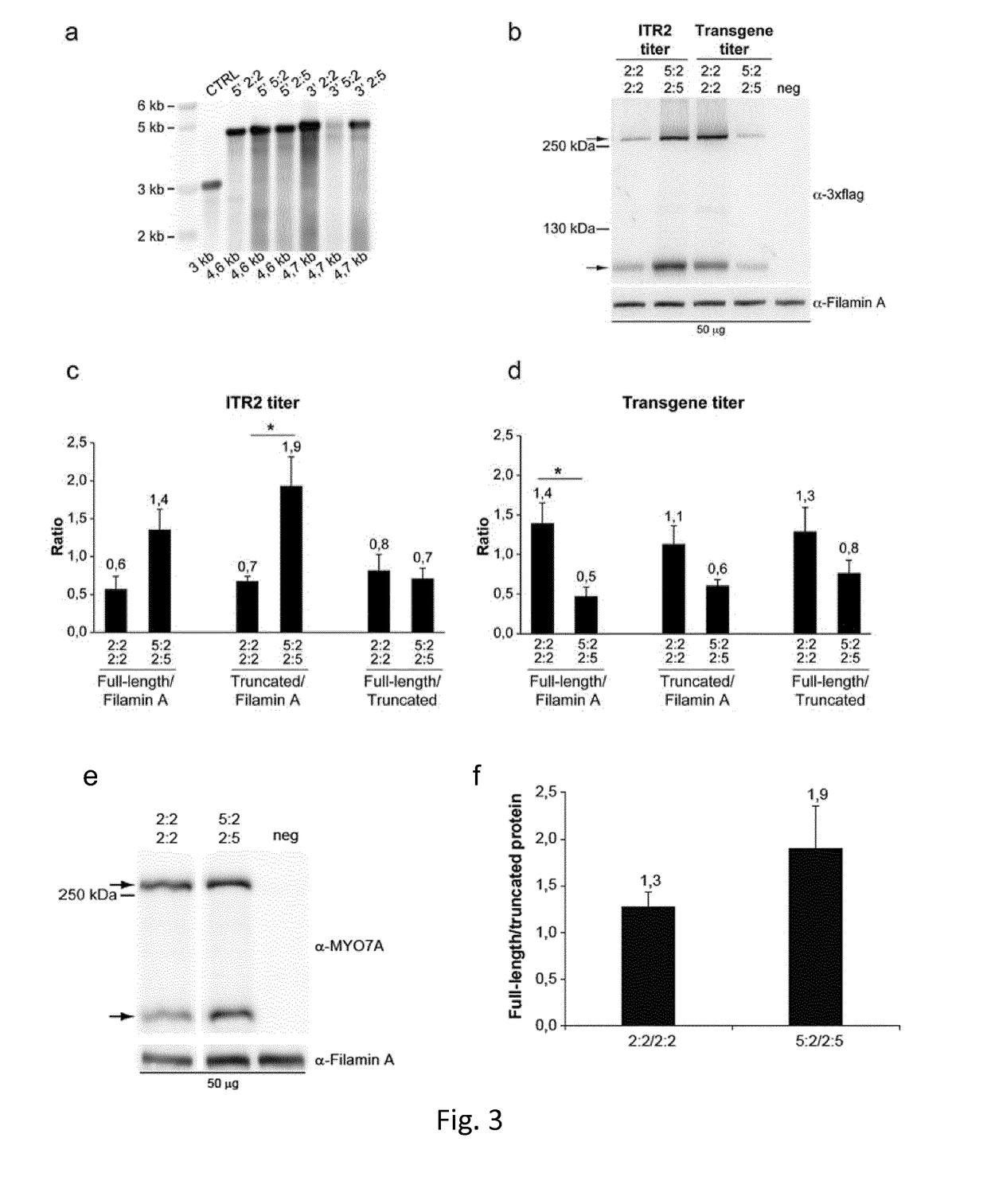Multiple vector system and uses thereof
a multi-vector system and vector technology, applied in the field of vectors and structures, can solve the problems of raising safety concerns and the packaging capacity of aav vectors, and achieve the effects of high murine transduction rate, superb transduction, and improved infectivity
- Summary
- Abstract
- Description
- Claims
- Application Information
AI Technical Summary
Benefits of technology
Problems solved by technology
Method used
Image
Examples
Embodiment Construction
Materials and Methods
Generation of Plasmids
[0211]The plasmids used for AAV vector production were all derived from the dual hybrid AK vector plasmids encoding either the human ABCA4, the human MYO7A or the EGFP reporter protein containing the inverted terminal repeats (ITR) of AAV serotype 214.
[0212]The AK recombinogenic sequence14 contained in the vector plasmids encoding ABCA4 was replaced with three different recombinogenic sequences derived from the alkaline phosphatase gene: AP (NM_001632, bp 823-1100,14); AP1 (XM_005246439.2, bp1802-151620); AP2 (XM_005246439.2, bp 1225-93820).
[0213]Dual AAV vector plasmids bearing heterologous ITR from AAV serotype 2 (ITR2) and ITR from AAV serotype 5 (ITR5) in the 5:2-2:5 configuration were generated by replacing the left ITR2 in the 5′-half vector plasmid and the right ITR2 in the 3′-half vector plasmids, respectively, with ITR5 (NC_006152.1, bp 1-175). Dual AAV vector plasmids bearing heterologous ITR2 and ITR5 in the 2:5 or 5:2 configurat...
PUM
| Property | Measurement | Unit |
|---|---|---|
| pH | aaaaa | aaaaa |
| total volume | aaaaa | aaaaa |
| pH | aaaaa | aaaaa |
Abstract
Description
Claims
Application Information
 Login to View More
Login to View More - R&D
- Intellectual Property
- Life Sciences
- Materials
- Tech Scout
- Unparalleled Data Quality
- Higher Quality Content
- 60% Fewer Hallucinations
Browse by: Latest US Patents, China's latest patents, Technical Efficacy Thesaurus, Application Domain, Technology Topic, Popular Technical Reports.
© 2025 PatSnap. All rights reserved.Legal|Privacy policy|Modern Slavery Act Transparency Statement|Sitemap|About US| Contact US: help@patsnap.com



